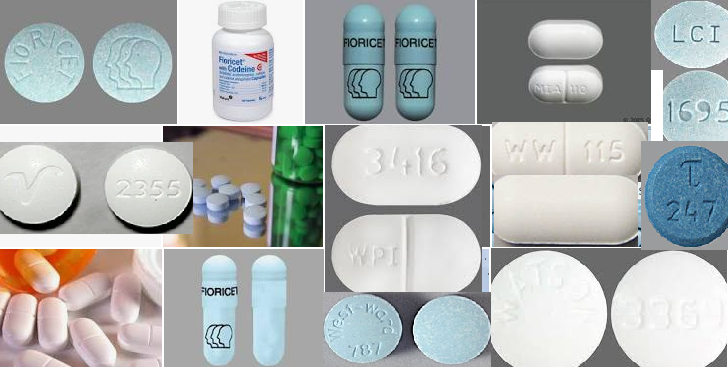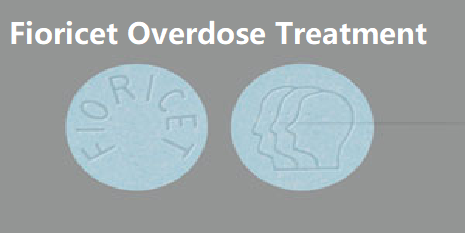Butalbital Overdose: drowsiness, confusion, and coma; respiratory depression; hypotension; and hypovolemic shock.
Acetaminophen Overdose: dose-dependent, potentially fatal hepatic necrosis is the most serious adverse effect. Renal tubular necrosis, hypoglycemic coma, and thrombocytopenia may also occur. Early symptoms following a potentially hepatotoxic overdose may include: nausea, vomiting, diaphoresis, and general malaise. Clinical and laboratory evidence of hepatic toxicity may not be apparent until 48 to 72 hours post-ingestion. In adults hepatic toxicity has rarely been reported with acute overdoses of less than 10 grams, or fatalities with less than 15 grams.
Caffeine Overdose: insomnia, restlessness, tremor, and delirium, tachycardia and extra systoles.
What happens if I overdose?
Seek emergency medical attention or call the Poison Help line at 1-800-222-1222. An overdose of Fioricet can be fatal.
The first signs of an acetaminophen overdose include loss of appetite, nausea, vomiting, stomach pain, sweating, and confusion or weakness. Later symptoms may include pain in your upper stomach, dark urine, and yellowing of your skin or the whites of your eyes.
Overdose symptoms may also include insomnia, restlessness, tremor, diarrhea, increased shallow breathing, uneven heartbeats, seizure (convulsions), or fainting.

Fioricet Detox
Fioricet is known to have withdrawal symptoms when regular use is discontinued. These symptoms can decrease gradually over an estimated two-week period. However, the safest way to proceed through withdrawal from Fioricet requires medical assistance, as withdrawal symptoms from Fioricet can be fatal if they are not properly supervised.
Detoxification is the body’s natural process of removing toxins. People who frequently use a substance never truly detoxify from the substance because they are always adding more into their system. When someone with a Fioricet use disorder chooses to seek treatment, the first thing they must do is stop taking Fioricet and let the body detoxify.
The detoxification process can be challenging, but it is a necessary part of a person’s recovery. A medically supervised detox program is important to safely remove the substance from the body. Some people choose to try “cold turkey” detoxification, which is a potentially dangerous detox approach that involves an individual abruptly halting the intake of the drug. Because of the sudden lack of the substance that the body and mind have become used to, a person can experience severe withdrawal symptoms that often result in a failed attempt at detoxing. Quitting Cold Turkey is not a recommended or an efficient way to detox from Fioricet.
There is not one specific detoxification program that works the same for everyone. To meet individual needs, The Recovery Village has staff and resources to tailor a detox approach for each client’s unique needs. At a rehabilitation facility, trained medical professionals will guide each patient through their unique treatment plan and usher them safely through their personal withdrawal symptoms.
Detox Process for Fioricet Abuse
There are two ways to detox: “cold turkey”, or by tapering, which is gradually lowering substance dosages. Many people who choose to detox on their own at home attempt the “cold turkey” method. However, a cold-turkey detox can be dangerous, because the onset of withdrawal symptoms is more severe. Because of the potential intensity of Fioricet withdrawal symptoms, the person going through detox may end up experiencing setbacks without the proper supervision and care that a rehabilitation facility can provide.
Professional medical detoxification is the safest option when it comes to beginning on the path to recovery. At The Recovery Village, clients are monitored 24/7 to ensure that withdrawal is as comfortable as possible, that their vitals are at healthy levels and that they are not experiencing any life-threatening symptoms.
The primary risks during detox include dehydration and delirium tremens. Severe dehydration can lead to seizures,, which can easily become lethal, especially if they occur in an at-home environment without medical supervision. Delirium tremens can also lead to cardiac arrhythmia and respiratory failure, which can be fatal if left untreated.
Following detox, the patient is ready to begin treatment for their Fioricet use disorder. The Recovery Village offers many different treatment options including inpatient and outpatient rehab. Rehab is a proven treatment method for Fioricet addiction because it addresses both the physical and psychological sides of the disease.

The Treatment of Fioricet Overdose
A single or multiple overdose with this combination product is a potentially lethal polydrug overdose, and consultation with a regional poison control center is recommended.
Immediate treatment includes support of cardiorespiratory function and measures to reduce drug absorption. Vomiting should be induced mechanically, or with syrup of ipecac, if the patient is alert (adequate pharyngeal and laryngeal reflexes). Oral activated charcoal (1 g/kg) should follow gastric emptying. The first dose should be accompanied by an appropriate cathartic. If repeated doses are used, the cathartic might be included with alternate doses as required. Hypotension is usually hypovolemic and should respond to fluids. Pressors should be avoided. A cuffed endotracheal tube should be inserted before gastric lavage of the unconscious patient and when necessary, to provide assisted respiration. If renal function is normal, forced diuresis may aid in the elimination of the barbiturate. Alkalinization of the urine increases renal excretion of some barbiturates, especially phenobarbital.
Meticulous attention should be given to maintaining adequate pulmonary ventilation. In severe cases of intoxication, peritoneal dialysis, or preferably hemodialysis may be considered. If hypoprothrombinemia occurs due to acetaminophen overdose, vitamin K should be administered intravenously.
If the dose of acetaminophen may have exceeded 140 mg/kg, acetylcysteine should be administered as early as possible. Serum acetaminophen levels should be obtained, since levels four or more hours following ingestion help predict acetaminophen toxicity. Do not await acetaminophen assay results before initiating treatment. Hepatic enzymes should be obtained initially, and repeated at 24-hour intervals.
Methemoglobinemia over 30% should be treated with methylene blue by slow intravenous administration.
Toxic Doses (for adults)
| Butalbital: | toxic dose | 1 g | (20 tablets) |
| Acetaminophen: | toxic dose | 10 g | (30 tablets) |
| Caffeine: | toxic dose | 1 g | (25 tablets) |
In all cases of suspected overdosage, call your Regional Poison Control Center to obtain the most up-to-date information about the treatment of overdosage. Telephone numbers of certified Regional Poison Control Centers are listed in the Physicians’ Desk Reference®*.
